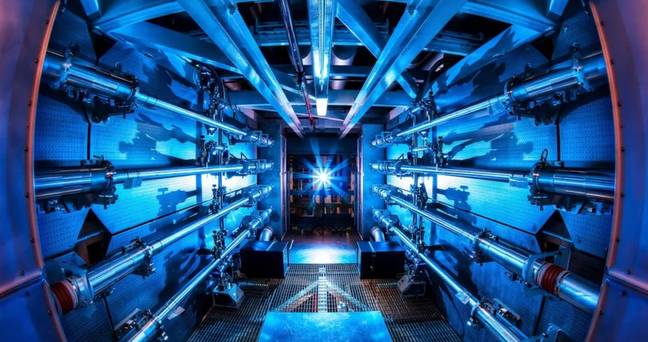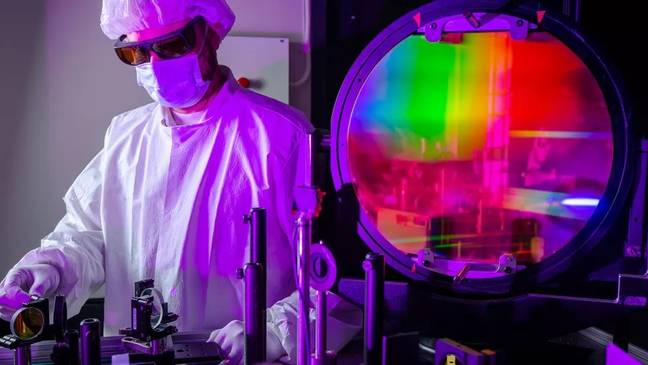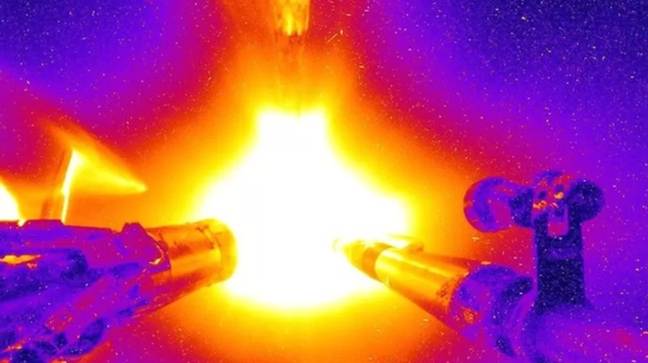Sometimes the biggest changes can come from the smallest of things and this is definitely the case for a bunch of scientists who have discovered a tiny in size but colossal in impact game-changer for the world.
Researchers have found that just a minuscule diamond sphere can completely change life as we know it.
Set to unlock a whole new chapter for the planet, this discovery is certainly revolutionary.
The world’s most energetic laser is called the National Ignition Facility – or NIF – which lives at Lawrence Livermore National Laboratory.
For decades now, scientists have been trying to make a breakthrough in how we use energy by researchers pursuing the technology as it promises a potential source of almost limitless clean energy.

And, for the first time ever, these scientists have made some very exciting steps towards just that.
It all started last year (5 December 2022), when scientists based at NIF in California aimed their 192 beam laser towards a cylinder which contained a tiny diamond fuel capsule.
Taking place at 1:03 am, that powerful beam of the laser light shot towards the diamond capsule.
This, in turn, created cosmic temperatures and pressures which resulted in a fusion reaction – such reactions are exactly what powers the sun.
While the NIF had conducted similar experiments to this one in the past – there was one particular difference that made the discovery so revolutionary.

Scientists observed that the energy that came out of the reaction ended up being way more than the laser power used to trigger it in the first place.
A major component at NIF is a tiny synthetic diamond capsule – no larger than a peppercorn – which is what carries the fuel.
Even though it is small, the capsule certainly packs a punch as its very properties are critical for the success of the fusion experiment.
Needing to be totally smooth and free from any anomalies – the diamond spheres are the product of years of tiresome work led by the German company, Diamond Materials.
Christoph Wild, managing director of the company explained: “The demands on the [spherical] capsules are very high.

“We collaborate closely with Lawrence Livermore and try to minimize defects like impurities, cavities or uneven walls.”
The team over at Diamond Materials – just 25 people in total – have figured out how to create the synthetic diamond through a process known as chemical vapor deposition.
It takes nearly two entire months just to manufacture each lot of 20-40 capsules which are made by layering tiny diamond crystals around a silicon carbide core to then be polished at a microscopic level.
After the batch of capsules finally arrived from Germany to the Lawrence Livermore National Laboratory, scientists took out the core before using a minuscule glass tube to fill out the hollow sphere.

The tube contains a mixture of two different kinds of hydrogen – deuterium and tritium – which are responsible for fueling the fusion reaction.
Mike Farrell, vice president of inertial fusion technology at General Atomics, which is also the lab’s largest industrial partner, explained that around the fuel pellet is a ‘gold and depleted uranium cylinder’.
The final layer of the groundbreaking sphere is an aluminum cylinder used as a cooling tool to lower the temperatures within the capsule before the fusion reaction begins.
The discovery, following December’s successful experiment, will allow NIF to take further measurements to improve their technology so they can eventually replicate and improve the reaction after gaining more support for the research.

Farrell noted: “The experiment changed scientific opinion. Ignition was always thought of as almost unattainable, [or something that might only happen] 40 years in the future. The result in December was eye-opening.”
Hoping for a boost in funding, he continued: “Governmental and corporate funding may be easier to come by now that ignition has been proven possible.”
Referencing the first-ever flight conducted by the Wright brothers back in 1903 which led to the first supersonic flight in the 1950s, the vice president added: “In 40 years or so, a lot can progress.”
While a lot more work needs to be done in developing the technology – it’s fair to say that this breakthrough discovery will have some incredible impact on the planet.
